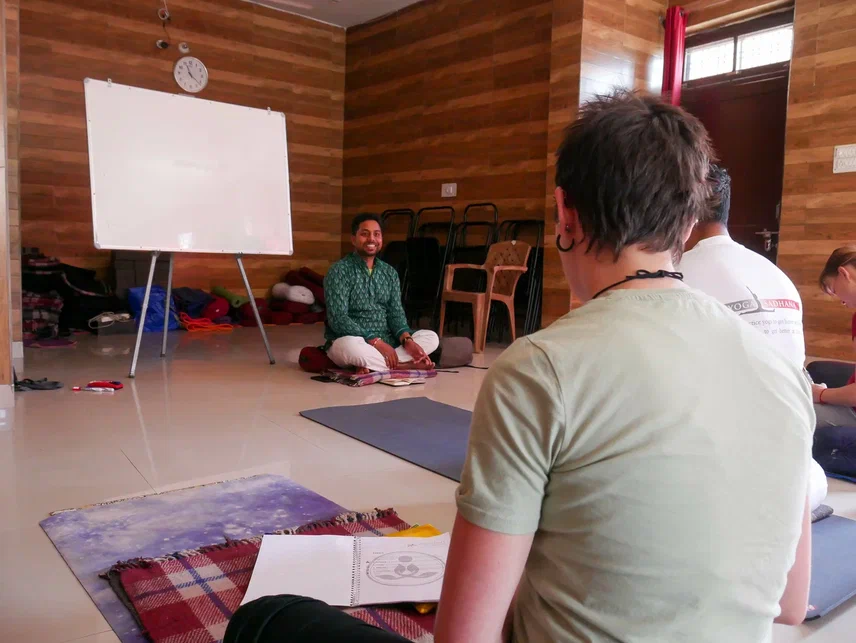Namaste, dear readers! Today, we intend to dive deep into the profound viewpoint of the eight limbs of Ashtanga Yoga. A course that has been a guiding light on the journey of self-discovery and individual improvement.
As a committed yoga specialist, we are excited to share with you the knowledge of the eight limbs of Ashtanga Yoga. This is a blueprint for attaining internal tranquility, balance, as well as self-realization.
Introduction to Ashtanga Yoga
Ashtanga Yoga is typically referred to as the Eight Limbs of Ashtanga Yoga. It is a spiritual and ancient system of yoga. This was ordered by the sage Patanjali in the Yoga Sutras more than 2,000 years ago.
It serves as a thorough guide. For individuals looking to not just acquire physical health but also achieve mental clarity and spiritual awakening.
The Eight Limbs of Ashtanga Yoga
Yama
The first limb of the Ashtanga Yoga exercise comprises 5 moral concepts that work as standards for living a harmonious and virtuous life. These principles are Ahimsa, Satya, Asteya, Brahmacharya, and Aparigraha.
Accepting these principles helps us grow empathy, sincerity, and honesty in our communications with ourselves and others.
By practicing Yama, we lay the foundation for calm as well as a balanced life.
Niyama
The second limb includes five observances that encourage self-discipline and self-purification. These observations are Saucha, Santosha, Tapas, Svadhyaya, and Ishvara Pranidhana.
Niyama helps us support a favorable internal environment, fostering contentment, and strengthening our spiritual connection. It encourages us to grow a feeling of gratefulness and mindfulness in our daily lives.
Asana
The third limb, Asana, is the most well-known facet of yoga. It includes the method of physical stances that enhance toughness, adaptability, and equilibrium in the body.
The objective of Asana is not just physical conditioning but also to prepare the body for reflection and spiritual practices.
With constant Asana practice, we learn to take initiative as well as ease, promoting a state of mindfulness and presence on and off the mat.
Pranayama
The fourth limb, Pranayama, revolves around breath. It instructs us to control the breath to soothe the mind and revitalize the body. Deep and conscious breathing strategies, such as pranayama and Nadi Shodhana. These are exercised to clean and invigorate the pranic paths in the body.
Pranayama is a bridge between the physical as well as mental worlds. They assist us in achieving greater mental clarity as well as internal peace.
Pratyahara
The fifth limb, Pratyahara, is all about turning our internal interest by withdrawing our senses from external distractions. In a world loaded with constant stimulation, the Limbs of Ashtanga Yoga allow us to gain back control and save our energy for deeper self-exploration.
Pratyahara urges us to look beyond the surface area and explore the inner landscapes of our mind and consciousness.
Dharana
The sixth limb, Dharana, is the art of concentration. It entails concentrating the mind on a single point, or item. This method improves psychological self-control and prepares the mind for meditation.
In a world of scattered interest, Dharana teaches us to harness the power of a focused mind. This is leading the way for extensive insight and self-realization.
Dhyana
The seventh limb, Dhyana, is the practice of meditation itself. It is the state of continual focus and steady recognition. This is where the meditator experiences an extensive connection with the reflection. It usually causes a deep sense of internal peace as well as unity with deep space.
Meditation is the entrance to recognizing the true nature of the self and going beyond the limits of the ego.
Samadhi
The eighth limb of Ashtanga yoga, Samadhi, is the supreme goal of the Ashtanga Yoga. It is the state of union with the divine, where the practitioner experiences a profound combination with universal awareness.
In Samadhi, the specific self dissolves, and there is an extensive realization of oneness with all that exists.
Samadhi is the pinnacle of spiritual advancement. It is standing for the culmination of the transformative journey with the Eight limbs of Ashtanga Yoga.
Also Read – Savasana (Corpse Pose): Benefits and Precautions
Personal Improvement through Ashtanga Yoga
The Eight Limbs of Ashtanga Yoga exercise provides a detailed roadmap for individual progress. By carefully exercising these limbs, one can gradually drop the layers of Maya and lack of knowledge that obscure our real nature.
Conclusion
To conclude, the Eight Limbs of Ashtanga Yoga exercise offers a holistic path to individual improvement. This incorporates physical, mental, psychological, and spiritual dimensions of our being. By accepting these limbs and also weaving them right into our day-to-day lives. We can embark on a trip of self-discovery, inner development, and profound improvement.
As a humble expert in Ashtanga Yoga, we invite you to discover these limbs, one step at once. Also, experience the profound modifications they can offer your life. Remember that the trip of individual change is a lifelong one. Every action you take brings you closer to your true self and also the harmonious union with the divine.
May you find peace, balance, and enlightenment on your own Ashtanga Yoga trip. Namaste.
Also Read – Struggling with Emotional Imbalance? Can Kundalini Yoga Chakras Bring You Peace?

